CMMC Requirement SI.L1-B.1.XV – System & File Scanning: Perform periodic scans of the information system and real-time scans of files from external sources as files are downloaded, opened, or executed.
AMTSO is the Anti-Malware Testing Standards Organization, a community of over 60 security and testing companies from around the world. This policy template is meant to supplement the CIS Controls v8. The policy statements included within this document can be used by all CIS Implementation Groups (IGs) but are specifically geared toward Safeguards in Implementation Group 1 (IG1). This document provides self-assessment guidance for conducting Cybersecurity Maturity Model Certification (CMMC) assessments for Level 1. This Ransomware Guide includes ransomware prevention best practices and a ransomware response checklist. This on demand course from CISA can assist in training users on how to ensure devices have antivirus and anti-malware protection. This guide from CISA is designed to provides high level information about protecting against malicious code. Learn about antivirus for business, why it's essential, and how it protects your small business against cyberthreats. This guide is intended to provide small and medium-sized organizations with guidance for using Microsoft 365 (M365) to satisfy the Cybersecurity Maturity Model Certification (CMMC) Level 1 requirements. Microsoft Entra ID meets identity-related practice requirements in each Cybersecurity Maturity Model Certification (CMMC) level. To be compliant with requirements in CMMC, it's the responsibility of companies performing work with, and on behalf of, the US Dept. of Defense (DoD) to complete other configurations or processes. In CMMC Level 1, there are three domains that have one or more practices related to identity: Access Control (AC), Identification and Authentication (IA), and System and Information integrity (SI) This blog speaks to the different types of malicious code and how to protect against it. NIST resource that defines the requirements for malicious code protection. This NIST Special Publication provides recommendations for improving an organization’s malware incident prevention measures. In this article, you'll learn how to install and run three different antimalware applications that can help you keep your system free of malicious irritants that make users call you at the least convenient times: chkrootkit, rkhunter, and ClamAV. This sample policy from Sam Houston State University is an example of a policy to reduce risk by protecting against malware. This SANS whitepaper discusses several common practices which, when implemented together, will greatly decrease, and perhaps almost stop malware.
Periodic scans of organizational systems and real-time scans of files from external sources can detect malicious code. Malicious code can be encoded in various formats (e.g., UUENCODE, Unicode), contained within compressed or hidden files, or hidden in files using techniques such as steganography. Malicious code can be inserted into systems in a variety of ways including web accesses, electronic mail, electronic mail attachments, and portable storage devices. Malicious code insertions occur through the exploitation of system vulnerabilities.
Further Discussion
Consider use of anti-malware software to scan for viruses in your computer systems and determine how often scans are conducted. Real-time scans look at the system whenever files are downloaded, opened, and saved. Periodic scans check previously saved files against updated malware information. Anti-malware software should be installed, run, and updated on all hosts for which satisfactory antivirus software is available.
